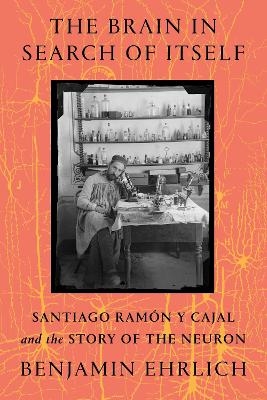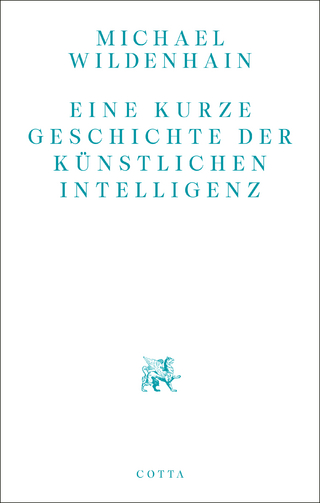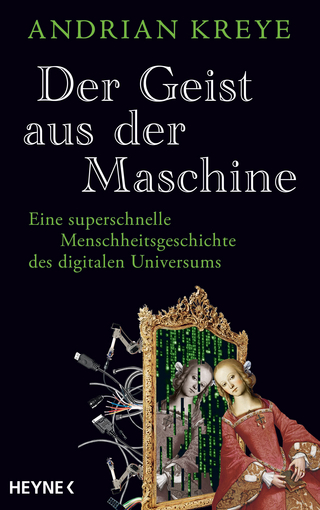
The Brain in Search of Itself
Santiago Ramón y Cajal and the Story of the Neuron
Seiten
2022
Farrar, Straus & Giroux Inc (Verlag)
978-0-374-11037-6 (ISBN)
Farrar, Straus & Giroux Inc (Verlag)
978-0-374-11037-6 (ISBN)
The first major biography of the Nobel Prize-winning scientist who discovered neurons and transformed our understanding of the human mind-illustrated with his extraordinary anatomical drawings
Unless you're a neuroscientist, Santiago Ramón y Cajal is likely the most important figure in the history of biology you've never heard of. Along with Charles Darwin and Louis Pasteur, he ranks among the most brilliant and original biologists of the nineteenth century, and his discoveries have done for our understanding of the human brain what the work of Galileo and Sir Isaac Newton did for our conception of the physical universe. He was awarded the Nobel Prize in 1906 for his lifelong investigation of the structure of neurons: "The mysterious butterflies of the soul," Cajal called them, "whose beating of wings may one day reveal to us the secrets of the mind." And he produced a dazzling oeuvre of anatomical drawings, whose alien beauty grace the pages of medical textbooks and the walls of museums to this day.
Benjamin Ehrlich's The Brain in Search of Itself is the first major biography in English of this singular figure, whose scientific odyssey mirrored the rocky journey of his beloved homeland of Spain into the twentieth century. Born into relative poverty in a mountaintop hamlet, Cajal was an enterprising and unruly child whose ambitions were both nurtured and thwarted by his father, a country doctor with a flinty disposition. A portrait of a nation as well a biography, The Brain in Search of Itself follows Cajal from the hinterlands to Barcelona and Madrid, where he became an illustrious figure-resisting and ultimately transforming the rigid hierarchies and underdeveloped science that surrounded him. To momentous effect, Cajal devised a theory that was as controversial in his own time as it is universal in ours: that the nervous system is comprised of individual cells with distinctive roles, just like any other organ in the body. In one of the greatest scientific rivalries in history, he argued his case against Camillo Golgi and prevailed.
In our age of neuro-imaging and investigations into the neural basis of the mind, Cajal is the artistic and scientific forefather we must get to know. The Brain in Search of Itself is at once the story of how the brain as we know it came into being and a finely wrought portrait of an individual as fantastical and complex as the subject to which he devoted his life.
Unless you're a neuroscientist, Santiago Ramón y Cajal is likely the most important figure in the history of biology you've never heard of. Along with Charles Darwin and Louis Pasteur, he ranks among the most brilliant and original biologists of the nineteenth century, and his discoveries have done for our understanding of the human brain what the work of Galileo and Sir Isaac Newton did for our conception of the physical universe. He was awarded the Nobel Prize in 1906 for his lifelong investigation of the structure of neurons: "The mysterious butterflies of the soul," Cajal called them, "whose beating of wings may one day reveal to us the secrets of the mind." And he produced a dazzling oeuvre of anatomical drawings, whose alien beauty grace the pages of medical textbooks and the walls of museums to this day.
Benjamin Ehrlich's The Brain in Search of Itself is the first major biography in English of this singular figure, whose scientific odyssey mirrored the rocky journey of his beloved homeland of Spain into the twentieth century. Born into relative poverty in a mountaintop hamlet, Cajal was an enterprising and unruly child whose ambitions were both nurtured and thwarted by his father, a country doctor with a flinty disposition. A portrait of a nation as well a biography, The Brain in Search of Itself follows Cajal from the hinterlands to Barcelona and Madrid, where he became an illustrious figure-resisting and ultimately transforming the rigid hierarchies and underdeveloped science that surrounded him. To momentous effect, Cajal devised a theory that was as controversial in his own time as it is universal in ours: that the nervous system is comprised of individual cells with distinctive roles, just like any other organ in the body. In one of the greatest scientific rivalries in history, he argued his case against Camillo Golgi and prevailed.
In our age of neuro-imaging and investigations into the neural basis of the mind, Cajal is the artistic and scientific forefather we must get to know. The Brain in Search of Itself is at once the story of how the brain as we know it came into being and a finely wrought portrait of an individual as fantastical and complex as the subject to which he devoted his life.
Benjamin Ehrlich is the author of The Dreams of Santiago Ramón y Cajal, the first translation of Cajal's dream journals into English. His work has appeared in the New England Review, Nautilus, and The Paris Review Daily.
| Erscheinungsdatum | 08.03.2022 |
|---|---|
| Zusatzinfo | 8 Pages of Color Images; 13 Black-and-White Images in Text / Notes, Bibliography, Index |
| Verlagsort | New York |
| Sprache | englisch |
| Maße | 168 x 237 mm |
| Gewicht | 697 g |
| Themenwelt | Literatur ► Biografien / Erfahrungsberichte |
| Sachbuch/Ratgeber ► Natur / Technik | |
| Geschichte ► Teilgebiete der Geschichte ► Technikgeschichte | |
| Naturwissenschaften ► Biologie ► Humanbiologie | |
| Naturwissenschaften ► Biologie ► Zoologie | |
| ISBN-10 | 0-374-11037-9 / 0374110379 |
| ISBN-13 | 978-0-374-11037-6 / 9780374110376 |
| Zustand | Neuware |
| Informationen gemäß Produktsicherheitsverordnung (GPSR) | |
| Haben Sie eine Frage zum Produkt? |
Mehr entdecken
aus dem Bereich
aus dem Bereich
Buch | Softcover (2024)
Lehmanns Media (Verlag)
19,95 €
Eine superschnelle Menschheitsgeschichte des digitalen Universums
Buch | Hardcover (2024)
Heyne (Verlag)
24,00 €


